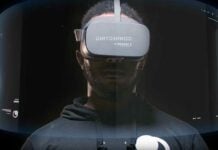The numbers are alarming. According to World Health Organization (WHO), over 177.00 million people die every year from cardio vascular diseases – basically 30% of all deaths worldwide. Heart related diseases rise steadily with age, yet younger adults are becoming more and more inclined to be at risk earlier in life. One of the main reasons for that is the high rates of obesity that have been increasing year after year. Also, high blood pressure patients are also proved to be a risk group for CVD´s.
February is the American Heart Month and we would like to raise awareness about this topic and well as to share the latest wearables and technologies that will support you in keeping good track of your heart´s health!
Scientists of the University of Tokyo have developed a second skin that is able to perform heart scans – something that is only available at hospitals. The elastic material can be stuck onto the body and is embedded with an integrated sensor system, which can wirelessly record and transmit the patient’s biometric data to a smartphone in real-time. Moreover, its breathable material with LEDs and stretchable wiring on a rubber sheet can be the best option for elderly people since it lighter and provokes less skin irritation. According to one of the developers, Professor Someya, this wearable is expected to reach the market in 2021 and will change the way we see care home systems.
The Northwestern University has paired up with Shirley Ryan AbilityLab in order to create a new type of stretchable electronic. This can be used in advanced medical care and by patients who are going through stroke rehabilitation. Herein, it is valid to mention that cardio vascular disease may harden the blood flow through the arteries – thereafter, causing the patient a heart attack or a stroke. Nonetheless, the new bandage throat sensor can capture the patient´s swallowing ability as well as his patterns of speech by measuring vibrations of the vocal cords. According to John Rogers – Engineering Professor at the Northwestern University –, these features are keen when diagnosing and treating aphasia (a communication disorder associated with stroke). Whenever patients are underperforming, clinicians will be alerted. Also, the data collected by the sensors can be displayed in a dashboard, thus facilitating analysis for both patients and clinicians.
Vital Scout, VivaLnk, is a wireless wearable patch that makes use of ECG sensors to gather Heart Rate (HR) and Respiratory Rate (RR) data with medical-grade accuracy. Its specialized algorithms enable Vital Scout to monitor physical activity, as well as stress levels and sleep quality. The wearable works like a band-aid that can be worn over the heart with electro-gel adhesives, so that users can keep up with their routine without a hassle. Its battery lasts up to 72 hours and provides the wearer with continuous monitoring and biometric feedback in real-time. One can keep track of their health status by checking the Vital Scout app, that provides the patient and physician with clear and detailed data.
Physicists at the University of Sussex designed a new kind of wearable technology: liquid-based sensors. This new technology contains graphene, a sensitive (yet strong), flexible and conductive material that is able to track vital information wirelessly, such as respiration and heart rates. Professor Alan Dalton adds that the sensor has a great potential to early detect life-threatening symptoms as cardiac arrhythmia and sleep apnoea. Moreover, graphene is an affordable material, which means that this future product will be accessible to many people.
So far as one can tell, the wearable heart device industry is driving a strong trend of R&D investments and we can´t hardly wait for the new products that are going to be the next blow in the market! Stay tuned for more news and market trends coming soon!
















